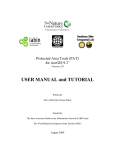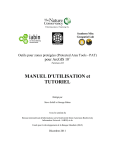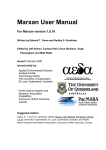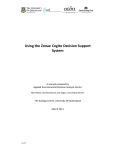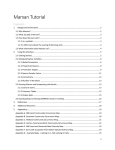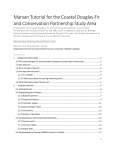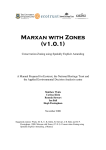Transcript
Using the Clumping Functionality within Marxan There are 2 primary reasons why users experience difficulties with the clumping functionality in Marxan. This functionality is related to the parameters target2, sepnum and sepdistance. 1) A solution for the clumping problem does not exist. You can determine whether this is the case by performing GIS analysis on your feature and planning unit layers. 2) The relatively unsophisticated algorithm used to search for solutions containing clumps cannot find a solution for the clumping problem. The algorithm does not perform an exhaustive search of decision space to find a solution. In spite of this limitation, the clumping functionality has been successfully used to solve research and management problems for a range of datasets around the world. There are some general techniques that can be used to manage this limitation. There is no research and development project currently scheduled to address this limitation. For a large number of restarts of Marxan, solutions can be found if they exist for some of those restarts. The proportion of restarts required will be related to the difficulty Marxan has in finding a solution to the clumping problem. In the initialisation routine for Marxan, a solution to the problem is computed, and feature penalties are set based on this solution. If this solution does not meet the clumping objectives, then incorrect penalties will be subsequently used for that run of Marxan, leading to incorrect operation. You can follow these steps to compute clumping solutions with Marxan; 1) Restart Marxan. 2) Observe if feature targets are met by run 1. If the targets are not met, kill the Marxan run and restart it. 3) Repeat this until the requisite number of good solutions has been computed. A simple and elegant alternative way to achieve clumping is to use the boundary length modifier. This method is extremely robust and fast, however, it doesn't give the same precise control over size, number and separation of clumps. (Excerpt from Game, E. T. and H. S. Grantham. (2008). Marxan User Manual: For Marxan version 1.8.10. University of Queensland, St. Lucia, Queensland, Australia, and Pacific Marine Analysis and Research Association, Vancouver, British Columbia, Canada.)

